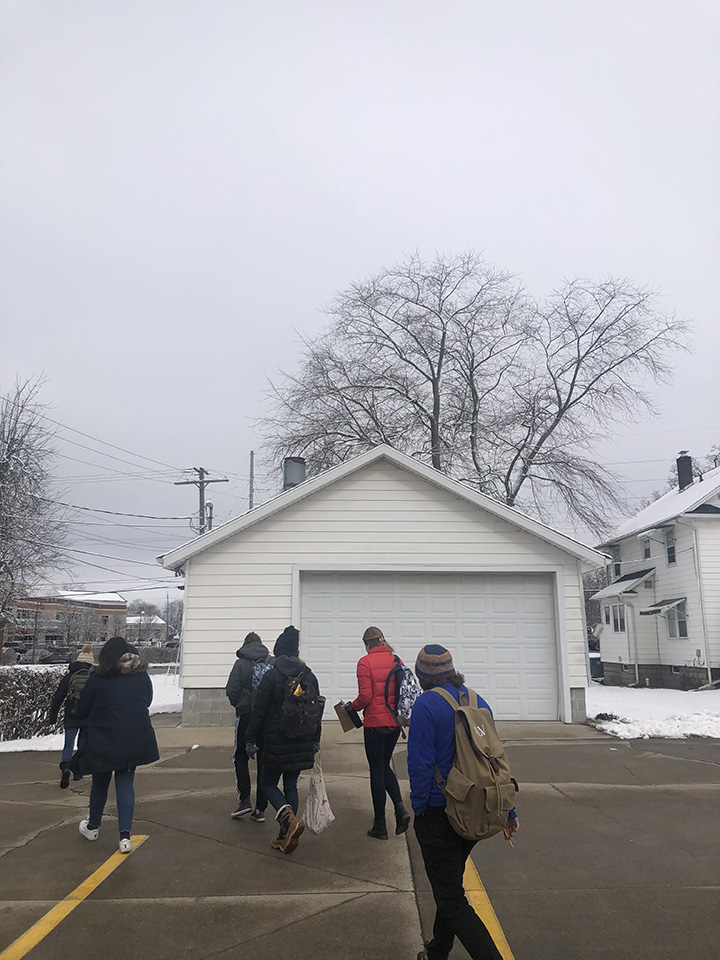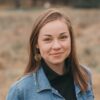Death lives across the street from Goshen College, in a white, double-door garage on the corner of South Main Street and River Vista Drive.
Once owned by Anabaptist scholar and former GC academic dean Harold S. Bender, the house is now rented out by Yoder-Culp Funeral Home. But the garage? In 2006, it was picked up, spun around to face south and licensed to house a crematory. Now, eight to ten bodies are cremated there each month, estimates funeral director Tim Yoder.Yoder was only three years old when the funeral home first opened in 1955, and 3,000 community members in Goshen showed up to tour the new building. Now the Yoder-Culp Funeral Home, solely run by Yoders, sees an average of 360 deaths a year, 40% of which end in cremation.
“As we built the cremation center that we have, we just sensed that people had more confidence,” Yoder said. “They trusted us to take care of the person who died.”
Intentional care through death is not only Yoder’s career, but it’s also his calling.
“I’m old enough to retire, but I don’t know,” he said. “I find this work so fascinating and so fulfilling; it doesn’t feel like a job to me.”
Yoder, 67, and his son, Colin, have thought of everything a customer would need in dealing with a death, making Yoder-Culp Funeral Home a one-stop shop for grief. And Goshen College students have been part of the story as well.
“We used to have students that lived here,” said Yoder. “They would babysit for us, wash cars and help on ambulance calls back in the 50s and 60s.”
The apartment has since been renovated into a multi-purpose space, but new additions have been added to other parts of the funeral home. An industrial-sized fridge moved in when Everett’s Linway Foods closed in Linway Plaza, a gift from Yoder’s friend David Holderman.
“They took it out of the building and sprayed it, because they had kept hamburger and feed and all kinds of things in there,” Yoder said. “It’s been wonderful. It’s a better system than most hospitals.”
Across the hall in the basement, the embalming station recently passed state inspection, Yoder’s son and co-funeral director Colin Yoder said. “There’s a little bit of science and there’s a little bit of art that goes on down here.”
Embalming also serves the need of a society that Yoder says, “is so busy that sometimes it’s hard to fit in a funeral.”
But the most recent addition, remodeled and licensed in 2006, is still the crematory.
“The Bender family was a huge part of my growing up days,” said Yoder, of the Harold S. Bender family. “My father had always said to Elizabeth Bender [Harold’s wife], ‘when you are ready to sell, please let us know.’”
The garage-turned-crematory cost between $60-70,000, Yoder recalls. But while an average casket, embalming and funeral can cost up to $9,000, a simple cremation is about $2,000. It has since been used by the diverse customers Yoder-Culp Funeral Home serves: Mennonites, Russian and Ukranian Orthodox, and Pentecostals and Buddhists.
“We do serve a high percentage of the Buddhist deaths in northern Indiana and lower Michigan,” Yoder said. “Part of their tradition is going from the place of the services over to the crematory where there’s also a service done there before the cremation.”
Ryan Miller, a 2018 graduate of GC, also witnesses the diversity of the Goshen funeral community as he continues to dig the vaults for graves at the Violett Cemetery.
“It really didn’t take long for me to just not think about it,” Miller said of death. But he acknowledges that to dig the grave, “I’m standing in somebody else’s grave. It’s their final resting place and here I am instead.”
In his fifth year of work at the cemetery Miller describes his work with pride, but notes that he still doesn’t like to tell people what his occupation is.
“Death is a fragile thing,” he said. “It’s the ultimate physical end.”
Students from Ann Hostetler’s Writing Creative Nonfiction class crossed the street last Thursday and toured the Yoder-Culp funeral home, using the field trip to inspire their researched place essay assignment.
“Our culture isn’t very helpful in nurturing a healthy attitude towards death as a part of life,” Hostetler said. “The field trip took something dreaded and mysterious for most of us and put it into a humane and practical context.”
“They provided a human bridge to understanding this difficult subject,” she said.
For Tim Yoder, the reality of human death becomes more apparent with age.
“Death becomes more real, because you are closer to that time,” he said.
When asked what work centered around death has taught him about life, Yoder was quick to focus on the people.
“Even though we are surrounded by death, Yoder said. “We’re working in a funeral home with people that are still alive.”




